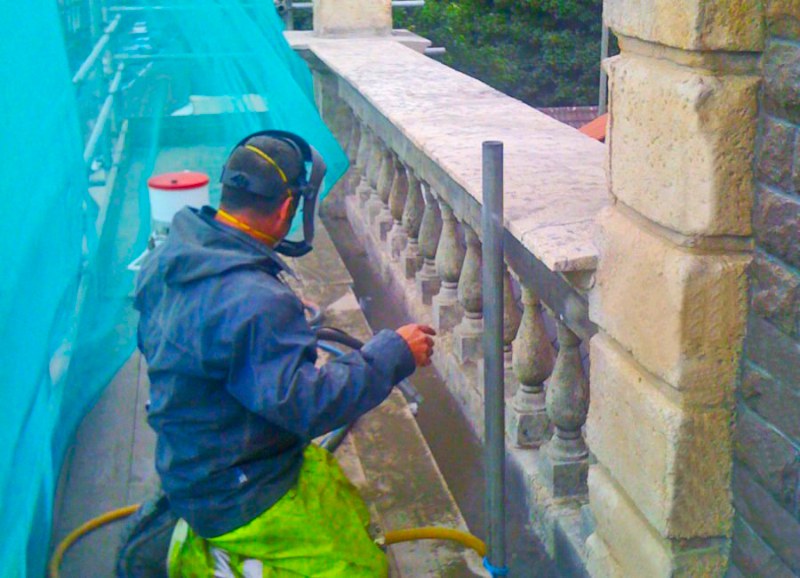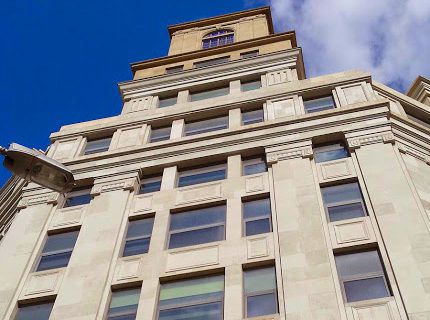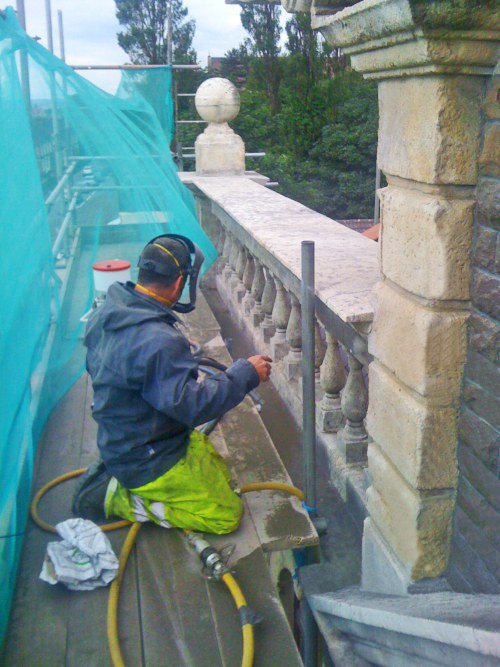
30 Years – Tailor Made Solutions – Accredited – Nationwide
As you gather quotes from building restoration companies, the type of mortar they propose for the pointing speaks volumes. Anyone suggesting the use of cement mortar for your heritage building or historic monument renovation should be discounted since it is wholly inappropriate.
Solid masonry walls rely on the fact that moisture entering the wall can escape as both water and water vapour. The use of cement based mortar prevents this as it has a closed pore structure.
The retained moisture damages interior finishes and can create an unhealthy environment for people living or working inside the building. Cement mortar is often the least permeable part of the wall, so retained moisture tries to find its way out through the bricks and stones. During the winter, as this moisture freezes, it expands causing damage to the stone or brick as well as the mortar – re-pointing and renovation is then the only solution.
For solid walls, traditional lime mortar pointing is the correct approach.
Lime mortar re-pointing of heritage buildings and historic monuments is something that needs an experienced property restoration company. Making the wrong decisions could spell disaster for the brickwork or stonework. One simple FREE telephone call to APT on 0800 0723 773 is all it takes to ensure that you have the best possible renovation team.
Lime mortar offers many advantages over cement mortar, the main one being that it ‘breathes’. Moisture within the solid stone or brick wall can therefore escape through the pointing instead of through the brick or stone. This allows the wall to dry out, ensuring that the stonework or brickwork is not damaged.
It also has the advantage of being more flexible than cement mortar so it moves with the building. It is also ‘self-healing’ so if the mortar develops micro-cracks due to building movement, these will gradually repair themselves.
The main reasons for re-pointing of solid walls are:
- The replacement of existing mortar
- Existing joints have weathered and requires replacing
The decision to carry out lime mortar pointing should be made by an expert stonemason. It is not always the best decision to remove existing cement pointing as that can actually be as damaging as leaving it in place.
To the untrained eye, lime mortar can appear to have reached a point where it needs replacing. This is not necessarily the case, many historic lime mortars will break or crumble much more easily than cement based mortar. This gives the impression that it needs replacing. In fact, softer mortars are more likely to have higher rates of permeability, protecting your historic stone or brickwork.
Once your lime mortar is in place, APT stonemasons will take all the necessary steps to ensure that it is cured correctly ensuring longevity and efficiency. During the re-pointing process, they will implement all necessary Health and Safety requirements making your job so much easier. By calling us on 0800 0723 773 you will have the peace of mind that your historic building or monument restoration project will be carried out expertly and safely.










































